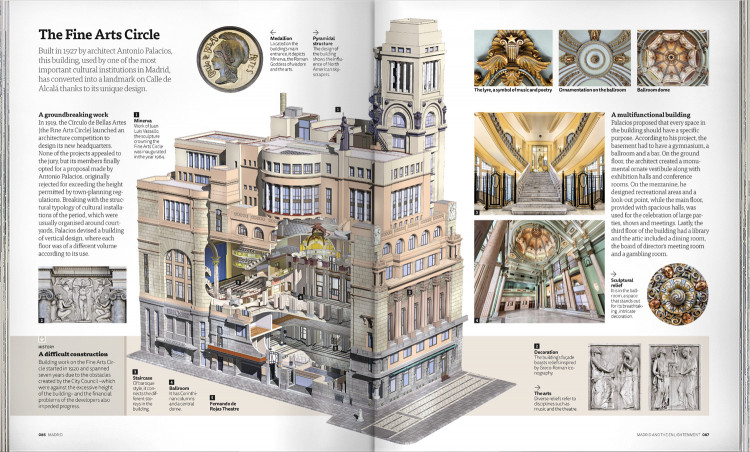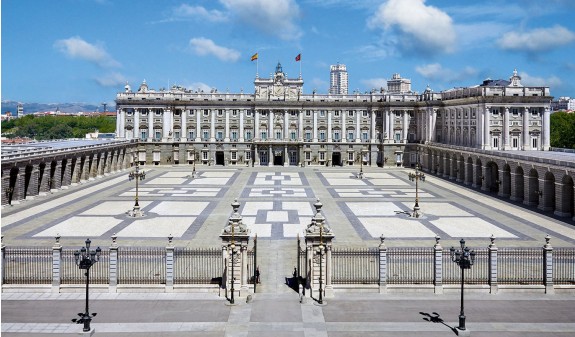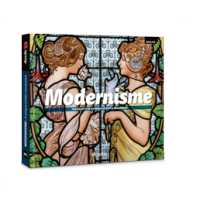Madrid
City of art and culture
RETURN
About the book Madrid
This book about Madrid published by Dosde offers a detailed tour of the most emblematic architecture, art and icons of the Spanish capital, a modern and cosmopolitan city with a great confluence of cultures that mixes tradition and innovation, under a powerful cultural and artistic legacy.
The book Madrid, a monumental city includes more than 500 photographs, illustrations and 3D recreations that have been made exclusively for this book. It also contains a great amount of information, fascinating facts and historical data to get to know the city and its culture in complete detail. It is one of the most complete books about Madrid published up to now, a complete testimony of the main Madrid facts and its most well known buildings and monuments.
This book has been published in a Deluxe Edition format, in order to enjoy the best photographs of the city of Madrid. Its carefully selected pictures and texts have made it a great reference book on the Spanish capital, essential in any library, as well as one of the best books in the Dosde catalogue, where you can also find titles such as Madrid, a great European capital, which brings together Madrid's pictures that best represent the city.
The book Madrid, a monumental city includes more than 500 photographs, illustrations and 3D recreations that have been made exclusively for this book. It also contains a great amount of information, fascinating facts and historical data to get to know the city and its culture in complete detail. It is one of the most complete books about Madrid published up to now, a complete testimony of the main Madrid facts and its most well known buildings and monuments.
This book has been published in a Deluxe Edition format, in order to enjoy the best photographs of the city of Madrid. Its carefully selected pictures and texts have made it a great reference book on the Spanish capital, essential in any library, as well as one of the best books in the Dosde catalogue, where you can also find titles such as Madrid, a great European capital, which brings together Madrid's pictures that best represent the city.
Deluxe Edition
Madrid
It includes exclusive digital content
Multilanguage: Available in 3 languages
Made with environmentally friendly paper
"Premio Clap" Best Editorial Design category
About the book Madrid
This book about Madrid published by Dosde offers a detailed tour of the most emblematic architecture, art and icons of the Spanish capital, a modern and cosmopolitan city with a great confluence of cultures that mixes tradition and innovation, under a powerful cultural and artistic legacy.
The book Madrid, a monumental city includes more than 500 photographs, illustrations and 3D recreations that have been made exclusively for this book. It also contains a great amount of information, fascinating facts and historical data to get to know the city and its culture in complete detail. It is one of the most complete books about Madrid published up to now, a complete testimony of the main Madrid facts and its most well known buildings and monuments.
This book has been published in a Deluxe Edition format, in order to enjoy the best photographs of the city of Madrid. Its carefully selected pictures and texts have made it a great reference book on the Spanish capital, essential in any library, as well as one of the best books in the Dosde catalogue, where you can also find titles such as Madrid, a great European capital, which brings together Madrid's pictures that best represent the city.
The book Madrid, a monumental city includes more than 500 photographs, illustrations and 3D recreations that have been made exclusively for this book. It also contains a great amount of information, fascinating facts and historical data to get to know the city and its culture in complete detail. It is one of the most complete books about Madrid published up to now, a complete testimony of the main Madrid facts and its most well known buildings and monuments.
This book has been published in a Deluxe Edition format, in order to enjoy the best photographs of the city of Madrid. Its carefully selected pictures and texts have made it a great reference book on the Spanish capital, essential in any library, as well as one of the best books in the Dosde catalogue, where you can also find titles such as Madrid, a great European capital, which brings together Madrid's pictures that best represent the city.
Videos Madrid
No reviews yet.
Additional Information
- Additional Information
- Subtitle: City of art and culture
- Weight (g): 1235
- Binding: Hard cover
- Size (cm): No
- Author: Dosde
- Pages: 0
- Edition: Deluxe Edition
Madrid facts
Founded in the latter half of the ninth century by Cordovan emir Muhammad I, Madrid started out as a small military enclave within the defense system deployed by the Muslims in the Iberian Peninsula to counteract Christian attacks. During this period, the city was known by the name Mayrit, an Arab name that might refer to the presence of a brook, as it is mentioned in numerous books.
Between 1083 and 1085, after being conquered by King Alfonso VI of Castile, the city came under Christian rule and began to prosper, without however achieving the growth of more important Castilian municipalities, such as nearby Toledo and Valladolid.
Regardless of the reasons that guided King Philip II in his choice, analysed in detail in numerous books about Madrid, as soon as his court arrived, Madrid was able to boast unprecedented development and growth in all areas, transforming into a thriving, dynamic and bustling capital, whose urban layout corresponded to the city's present historical centre.
During this period, regulations were passed in order to substantially improve the hygiene and illumination of public spaces, at the same time as streets were paved, large boulevards were devised and numerous buildings were erected of monumental design. Thanks to all these far-reaching changes, Charles III left an indelible mark on the city's layout, which throughout the nineteenth century continued to modernize with new projects that were in tune with the enlightened ideas of the monarch, described as "the best mayor of Madrid".
In parallel with this expansion, Madrid was able to equip itself with a solid industrial base and a modern service sector, moving away from its traditional conception as just a simple administrative centre to instead acquiring the status of a first-class financial and business centre. Thus, Madrid entered the twenty-first century as a heterogeneous and cosmopolitan city, comparable to other great European capitals. In order to maintain its economic and cultural position, in recent years the city has continued to plan and construct new buildings and infrastructures that reflect the most avant-garde architectural trends, in a constant updating process which is set to continue in the future.
Between 1083 and 1085, after being conquered by King Alfonso VI of Castile, the city came under Christian rule and began to prosper, without however achieving the growth of more important Castilian municipalities, such as nearby Toledo and Valladolid.
The kingdom's capital
The history of Madrid was to change radically in 1561, when King Philip II –son and heir of Charles I, the monarch that introduced the Habsburg dynasty to the Spanish throne– chose to establish the headquarters of his court in the expanding city. It is unknown what reasons influenced his decision, but by that time Madrid offered a number of advantages. The city enjoyed a mild climate and a geographical situation which allowed it to be the communications centre of the mainland. Likewise, in Madrid there were no institutions that could call into question royal authority.Regardless of the reasons that guided King Philip II in his choice, analysed in detail in numerous books about Madrid, as soon as his court arrived, Madrid was able to boast unprecedented development and growth in all areas, transforming into a thriving, dynamic and bustling capital, whose urban layout corresponded to the city's present historical centre.
Madrid and the Enlightenment
In Madrid, the influence of the Enlightenment was particularly evident during the reign of Charles III, between 1759 and 1788, when major urban development took place that was aimed at transforming the city into a first class European capital, in accordance with its function as headquarters to the main institutions of the State.During this period, regulations were passed in order to substantially improve the hygiene and illumination of public spaces, at the same time as streets were paved, large boulevards were devised and numerous buildings were erected of monumental design. Thanks to all these far-reaching changes, Charles III left an indelible mark on the city's layout, which throughout the nineteenth century continued to modernize with new projects that were in tune with the enlightened ideas of the monarch, described as "the best mayor of Madrid".
The new Madrid
During the second half of the 20th century, the history of Madrid was marked by the appearance of new centres of urban development. Within a relatively short time the Spanish capital rapidly increased its surface area and number of inhabitants by means of the annexation of the nearby municipalities, becoming the centre of a territory that had no preestablished limits.In parallel with this expansion, Madrid was able to equip itself with a solid industrial base and a modern service sector, moving away from its traditional conception as just a simple administrative centre to instead acquiring the status of a first-class financial and business centre. Thus, Madrid entered the twenty-first century as a heterogeneous and cosmopolitan city, comparable to other great European capitals. In order to maintain its economic and cultural position, in recent years the city has continued to plan and construct new buildings and infrastructures that reflect the most avant-garde architectural trends, in a constant updating process which is set to continue in the future.

























